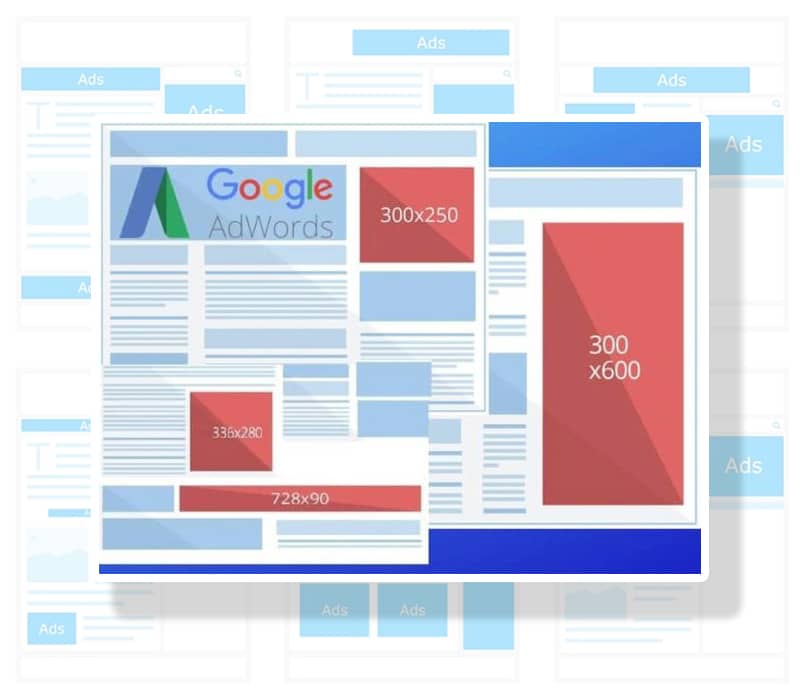The evolution of the banner as a dynamic advertising medium
In the beginning, banners were static images that were placed on websites to drive traffic to a product or service. However, with the advent of responsive websites and the increased use of mobile devices, these static ads were no longer the most effective way to reach consumers.
The next evolution of the banner came in the form of animated and interactive ads. These ads were more engaging for consumers and drove action, but they still had one major flaw: they were only visible for a short period of time before disappearing.
This meant that the message was only seen for a few seconds before the consumer stopped seeing it. To solve this problem, advertisers started using a new technology: programmatic advertising.
Programmatic ads are computer-generated ads that are created algorithmically, allowing advertisers to create ads that are more relevant to consumers.
These ads are designed to be more attractive and stay in view longer. However, programmatic ads have one major drawback: They are not as easy to create as static ads.
HTML5 banner
HTML5 banner
HTML5
HTML5 (HyperText Markup Language) is a hypertext markup language used for structuring and presenting content on the Web. It is developed through tags. It can therefore be defined as a tag language and not a programming language as such.
Through HTML5, among other things, it is possible to create transparent banners that adjust to any screen or device. Because a correct display of banner ads is very important. Especially to make an advertising campaign a success.
With the adoption of HTML5, companies can also improve the way they work with modern browsers such as Chrome, Explorer or Firefox. They are now faster than they were a few years ago.
HTML5 also allows enterprises to build and manage applications more finely and multiply across different platforms and devices in the same amount of time.
HTML5 banner
HTML5 banner
HTML5 banner
Since HTML5 arrived on the advertising banner design scene, there has been a huge leap.
Flash banner design used to be the banner format of choice. Compared to static images or animated GIFs, Flash banner design stood out from the crowd. It allowed ads to move and be interactive. It was a formidable tool and became a powerful creative medium.
However, thanks to HTML5, we now have the html5 banner, which has challenged flash banners. Here we will see why it is better to use an HTML5 banner format.
HTML5 banner
HTML5 banner
Why is HTML5 banner design better?
HTML5 allows banners to be managed on any device. Now it is not necessary to create several versions of the same banner ad. An HTML5 banner ad reduces this number and the chances of getting errors. This will significantly improve the design of banners.
HTML5 banner
HTML5 banner
There are many benefits to creating an HTML5 banner:
- HTML-based ads are easy to access and read on any device;
- Text, videos, images and Javascript code can be used in a banner just like on any other website.
- An HTML5 banner design can use dynamic server-side scripting and access databases if necessary.
- An HTML5 banner can be adjusted to any screen size.
The importance of responsive design in advertising
As we already know, the market is evolving towards mobile, and we have to think about using responsive banner ads if we want to make sure we reach our audience.
Responsive design allows the banner to be resized to fit any type of device. The HTML5 banner is the new way to create banners. It will make them fit and look perfect everywhere.
This means that advertisers need to understand that they need to create banner campaigns not just for one type of screen, but for different types of screens, such as mobile, laptop and tablet. And of course, with the HTML5 banner this type of design is covered.
In Aulatina Consulting we cover all your needs to create your HTML5 banner. Contact us for more information.
Let's work together
Formats
GIF SET (15 Sizes)
- 240 x 400 Vertical rectangle
- 320 x 50 Mobile leaderboard
- 468 x 60 Banner
- 728 x 90 Leaderboard
- 250 x 250 Square
- 200 x 200 Small square
- 336 x 280 Large rectangle
- 300 x 250 Inline rectangle
- 120 x 600 Skyscraper
- 160 x 600 Wide skyscraper
- 300 x 600 Half-page
- 970 x 90 Large leaderboard
- 320 x 100 Large mobile banner
- 970 x 250 Billboard
- 300 x 1050 Portrait
HTML5 SET (18 Sizes)
- 930 x 180 Top banner
- 320 X 50 Mobile leaderboard
- 468 X 60 Banner
- 728 X 90 Leaderboard
- 250 X 250 Square
- 200 X 200 Small square
- 336 X 280 Large rectangle
- 300 X 250 Inline rectangle
- 120 X 600 Skyscraper
- 160 X 600 Wide skyscraper
- 300 X 600 Half-page
- 970 X 90 Large leaderboard
- 320 X 100 Large mobile banner
- 970 X 250 Billboard
- 300 X 1050 Portrait
- 580 x 400 Netboard
- 980 x 120 Panorama
- 250 x 360 Triple widescreen

The most effective sizes are the large rectangle of 336×280the median rectangle of 300×250the league table of 728×90the half-page of 300×600and on the mobile the large mobile banner of the 320×100. and are in animated HTML5 much more effective they will be.
